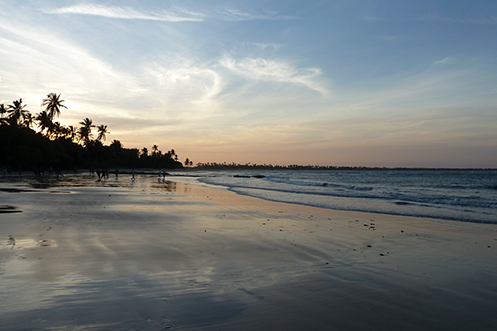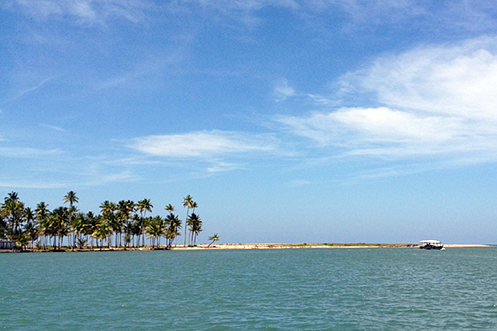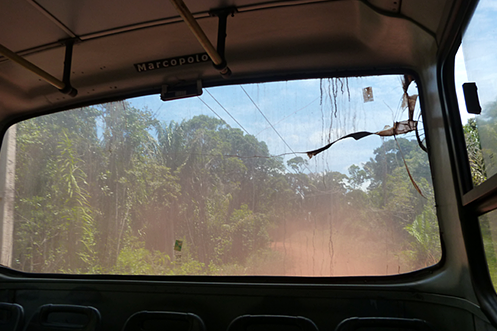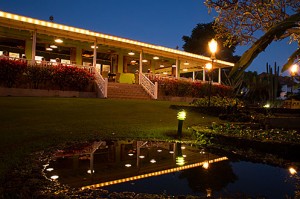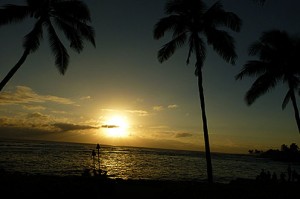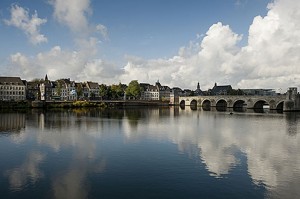‘Where?’ was the most common response from Brazilians when we told them we were going to Boipeba, making me think either I’d struck upon one of Brazil’s real hidden gems, or my pronunciation of it was just a bit dodgy.
In case like them you’re wondering, Boipeba is in fact a small island located to the south of Salvador. And no, it wasn’t down to my lack of Portuguese that people didn’t have a clue what I was talking about. Strange really as Boipeba is also next to the popular getaway of Morro de Sao Paulo, a regular weekend, and holiday, hotspot for people living in Salvador. But for some reason I’m pleased to say that Boipeba is relatively untouched by the commercialism of its neighbour.
Getting to Boipeba presented us with our first challenge. Luckily Sean, the owner of the Estrela Pousada in Salvador (click here for my post on Barra, where to stay in Salvador) had not only heard of, but is also a huge fan of, Boipeba. So he was able to give us the lowdown on how to get there. A super expensive way to get from Salavador to Boipeba is to fly, great if you’re feeling flush. But after a particularly stressful experience during our trip with TAM airlines (who were prepared to leave us stranded), personally I’d think twice about internal flights if you’re in Brazil for a while, especially given the price. So we decided on the cheaper option of getting to Boipeba from Salvador by boat.
As we weren’t sure how long our journey would take we took a cab to the ferry port at around 6am, taking public transport would have involved changing buses in rush hour, not a prospect we relished. We’d been warned there were no cash machines on Boipeba, so make sure you take enough cash with you. And as we learned after our taxi driver charged us extra to try and locate a cash point, it’s a good idea to draw out money the night before as ATMs in Salvador aren’t 24-hour. Most cashpoint machines are in locked booths that open between 6 and 7 am, though there is an ATM at the ferry port.
Purchasing our ferry ticket was relatively easy, the journey took about an hour and cost just R3.95 (just over £1) each, depositing us in the town of Valenca. I’d been a bit anxious about the prospect of catching the ferry – I’d read the crossing can be pretty rough and I get very seasick – but thankfully there was nothing to worry about. At Valenca we had the choice of getting a direct speedboat (R35 per person to Boipeba or taking the slow boat (R14.95 each) for half the price. Eager to save cash where possible given how expensive Brazil was turning out to be we opted for the later.
This, it turns out, also involved a one-and-a-half-hour bus ride (this was a local bus as opposed to a coach) before boarding a local boat that was more like a water taxi. I had no idea this would be the case, I’d just assumed we were taking a slower boat. But the bus was an exhilarating adventure, clinging on to our seats as we drove over various bumps at high speed, leaving a billowing trail of black dust in our wake. It allowed us the opportunity to see parts of the country we would otherwise have missed.
The slow boat also provided a great opportunity for photos as we passed by vast areas of mangrove (we took the speedboat back from Boipeba to Salvador and the spray of the water did make getting snaps more difficult, plus we went a different route).
It may have been about a seven-hour journey from Salvador to Boipeba but from the moment we set foot on the island (and one of the Brazil’s best beaches) we knew it had been worth the trek to get to this hidden gem.
